Abstract
The uptake of nitrate and ammonium by rice (Oryza sativa) seedlings was compared under various conditions. Nitrate uptake showed a 1-hour lag phase and then a rapid absorption phase, whereas ammonium uptake showed passive absorption during the first hour, then a shoulder of absorption, followed by a rapid metabolism-dependent absorption phase. Light did not affect the uptake of nitrate or ammonium. The uptake of nitrate and ammonium was markedly suppressed by removal of the endosperm. After removal of the endosperm, the uptake was restored by exogenous supply of 30 mm sucrose. No appreciable nitrate uptake was detected at temperatures below 15 C, whereas appreciable ammonium uptake occurred at 15 C, although lowered passive absorption and complete inhibition of the rapid metabolism-dependent absorption phase were observed at 5 C.
Nitrate uptake was decreased by aeration and also by bubbling the mixture with O2. It was greatly depressed by bubbling the mixture with N2. These results suggest that there is a low optimal O2 concentration for nitrate uptake. In contrast, ammonium uptake was increased by aeration, not influenced by bubbling with O2, and slightly decreased by bubbling the mixture with N2.
Nitrate uptake was almost entirely inhibited by addition of cycloheximide, KCN, or arsenate. These compounds had scarcely any effect on the passive absorption of ammonium, but entirely depressed its successive metabolism-dependent absorption. Ammonium uptake occurred before nitrate uptake in solution containing both nitrate and ammonium.
Full text
PDF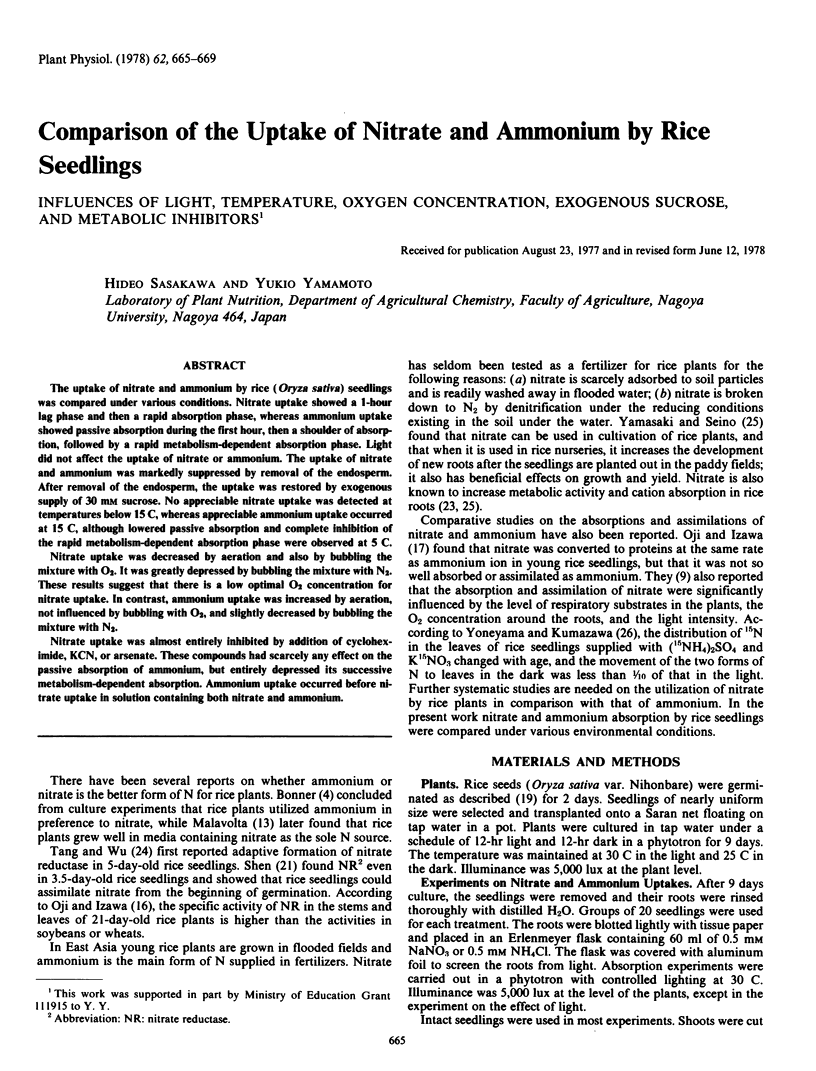
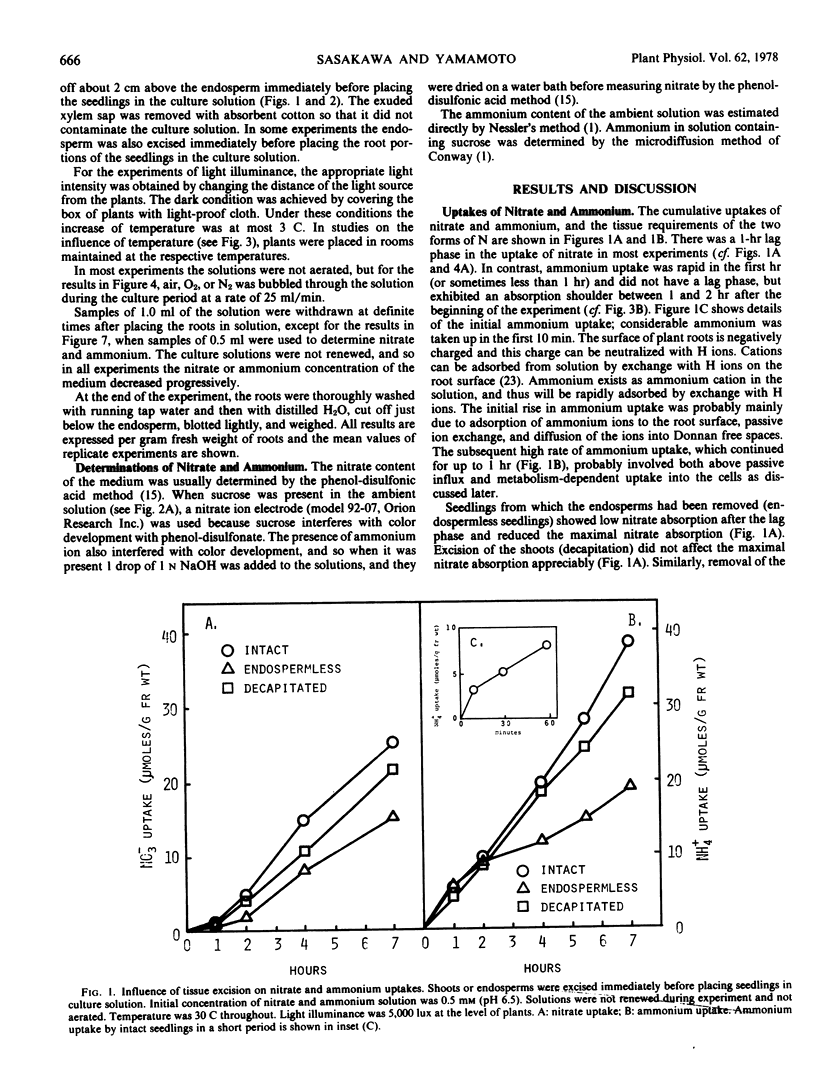
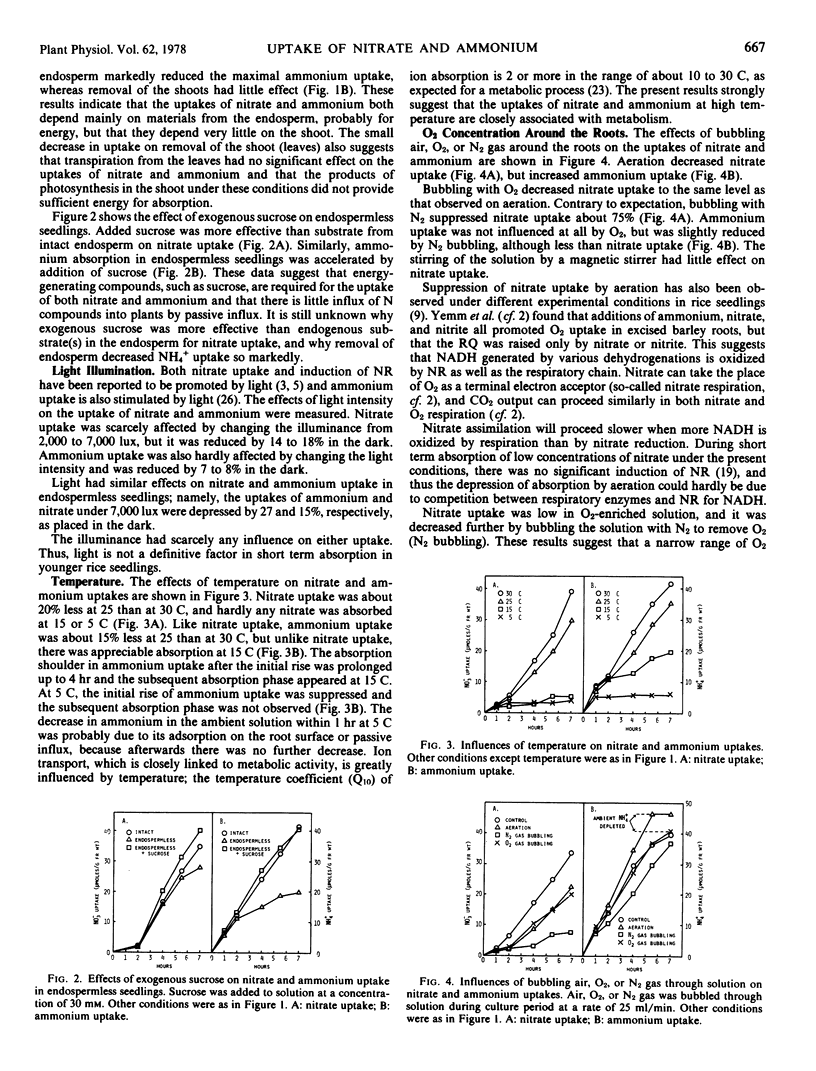
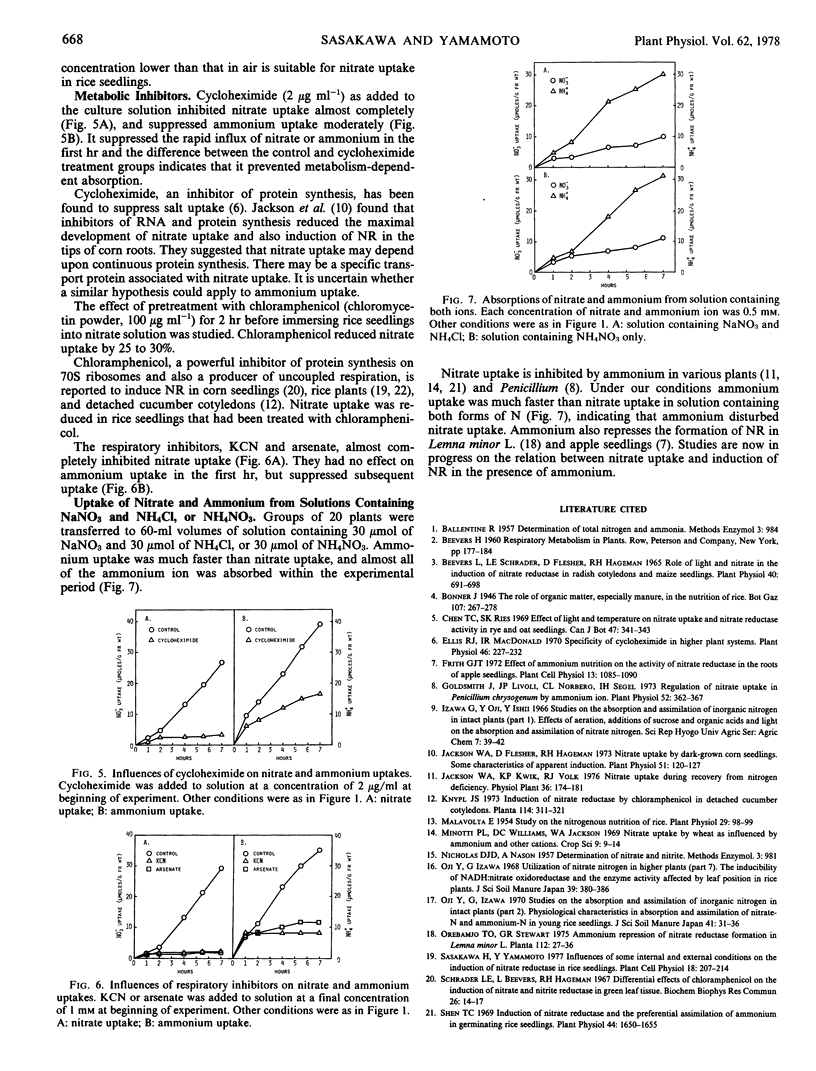
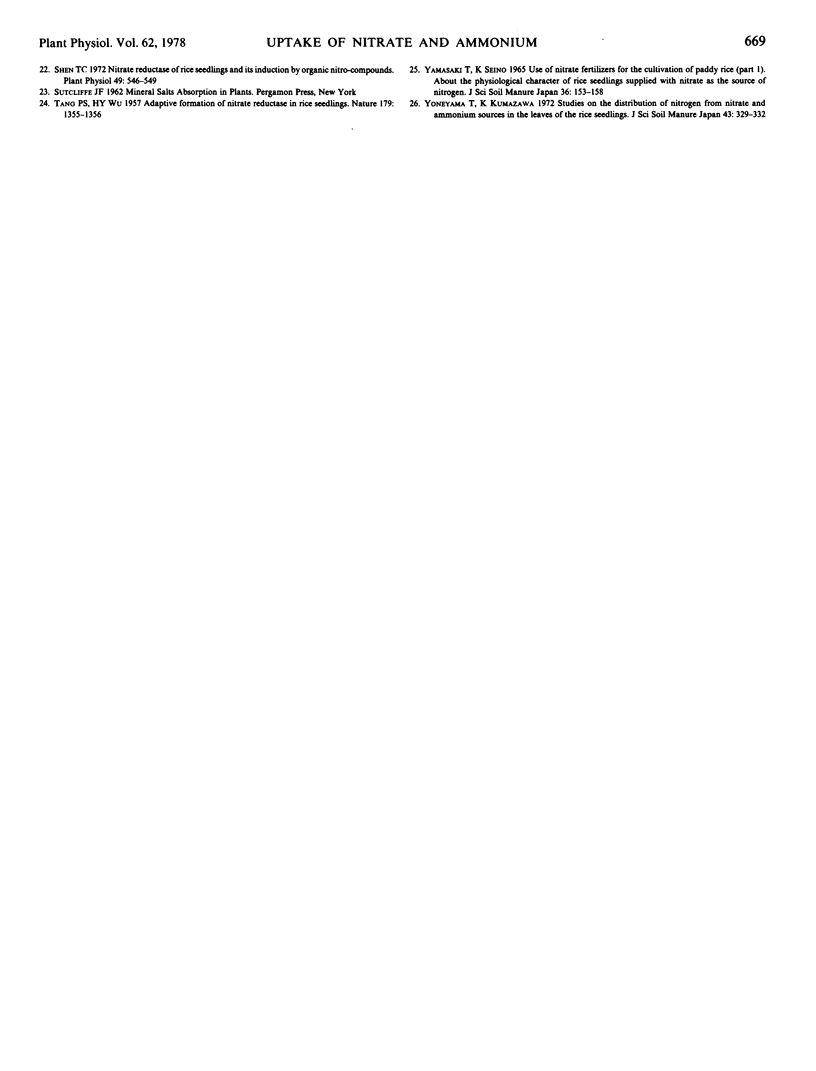
Selected References
These references are in PubMed. This may not be the complete list of references from this article.
- Beevers L., Schrader L. E., Flesher D., Hageman R. H. The Role of Light and Nitrate in the Induction of Nitrate Reductase in Radish Cotyledons and Maize Seedlings. Plant Physiol. 1965 Jul;40(4):691–698. doi: 10.1104/pp.40.4.691. [DOI] [PMC free article] [PubMed] [Google Scholar]
- Ellis R. J., Macdonald I. R. Specificity of cycloheximide in higher plant systems. Plant Physiol. 1970 Aug;46(2):227–232. doi: 10.1104/pp.46.2.227. [DOI] [PMC free article] [PubMed] [Google Scholar]
- Goldsmith J., Livoni J. P., Norberg C. L., Segel I. H. Regulation of Nitrate Uptake in Penicillium chrysogenum by Ammonium Ion. Plant Physiol. 1973 Oct;52(4):362–367. doi: 10.1104/pp.52.4.362. [DOI] [PMC free article] [PubMed] [Google Scholar]
- Jackson W. A., Flesher D., Hageman R. H. Nitrate Uptake by Dark-grown Corn Seedlings: Some Characteristics of Apparent Induction. Plant Physiol. 1973 Jan;51(1):120–127. doi: 10.1104/pp.51.1.120. [DOI] [PMC free article] [PubMed] [Google Scholar]
- Malavolta E. Studies on the Nitrogenous Nutrition of Rice. Plant Physiol. 1954 Jan;29(1):98–99. doi: 10.1104/pp.29.1.98. [DOI] [PMC free article] [PubMed] [Google Scholar]
- Schrader L. E., Beevers L., Hageman R. H. Differential effects of chloramphenicol on the induction of nitrate and nitrite reductase in green leaf tissue. Biochem Biophys Res Commun. 1967 Jan 10;26(1):14–17. doi: 10.1016/0006-291x(67)90244-6. [DOI] [PubMed] [Google Scholar]
- Shen T. C. Nitrate reductase of rice seedlings and its induction by organic nitro-compounds. Plant Physiol. 1972 Apr;49(4):546–549. doi: 10.1104/pp.49.4.546. [DOI] [PMC free article] [PubMed] [Google Scholar]
- Shen T. C. The induction of nitrate reductase and the preferential assimilation of ammonium in germinating rice seedlings. Plant Physiol. 1969 Nov;44(11):1650–1655. doi: 10.1104/pp.44.11.1650. [DOI] [PMC free article] [PubMed] [Google Scholar]


